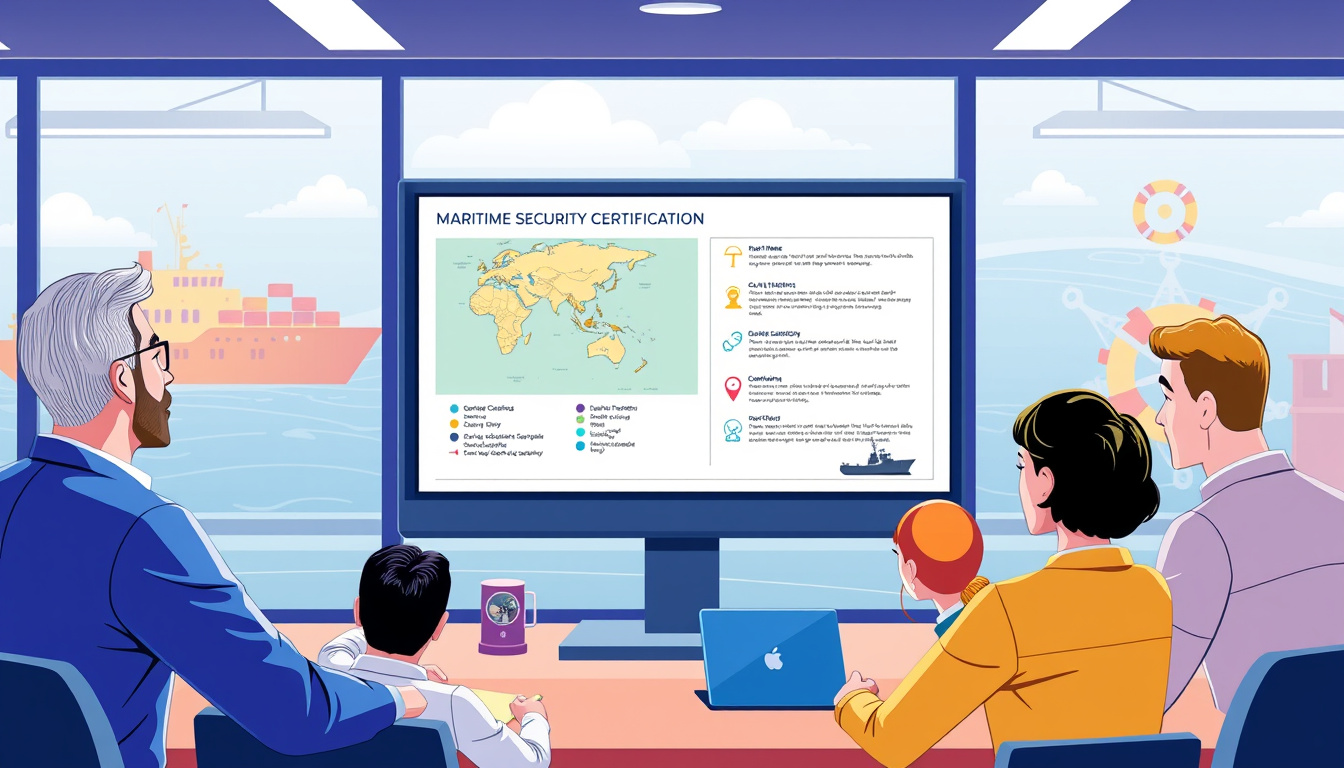As the marine industry continues to expand globally, the significance of security in marine facilities has grown tremendously. A Marine Facility Security Officer (PFSO) plays a crucial role in safeguarding maritime assets, ensuring compliance with security regulations, and maintaining the overall safety of the facility. In this article, we will explore the key responsibilities of a Marine Facility Security Officer, discuss essential training and certification requirements, outline daily responsibilities and security protocols, and delve into the challenges and best practices in marine facility security. This insight is not only vital for aspiring security officers but also for organizations aiming to enhance their security measures. With programs offered by organizations like the Virtual Maritime Academy, recognized for its DNV certification as a maritime training provider, individuals can acquire the necessary skills, such as those learned through the DNV Certified PFSO Course.
Learn More about our PFSO/MFSO Course!
Key Takeaways
- Marine Facility Security Officers play a crucial role in safeguarding maritime environments.
- Essential training includes risk assessment, emergency response, and regulatory compliance.
- Daily responsibilities encompass monitoring security systems and conducting safety drills.
- Challenges include adapting to evolving threats and ensuring effective communication among stakeholders.
- Best practices involve continuous training and collaboration with other security agencies.
Understanding the Role of a Marine Facility Security Officer
The role of a Marine Facility Security Officer (MFSO) is crucial in enhancing maritime security and safeguarding marine facilities. Understanding the key responsibilities of a Marine Facility Security Officer: training insights is essential for anyone aiming to excel in this position. An MFSO is primarily responsible for developing and implementing security plans that comply with international maritime regulations. They conduct regular security assessments, training sessions, and drills to ensure all personnel are well-prepared in case of security breaches. Further, they liaise with government agencies and maritime stakeholders to foster a secure maritime environment. With the rising importance of maritime safety, comprehensive training programs, such as the DNV Certified PFSO Course offered by Virtual Maritime Academy, equip officers with the necessary skills and knowledge to effectively manage security protocols at marine facilities. This certification underscores the credibility and professionalism of the training provided, making it an invaluable asset for aspiring MFSOs.
Essential Training and Certification Requirements
When it comes to maritime security, understanding the key responsibilities of a Marine Facility Security Officer (PFSO) is crucial. The role of a PFSO goes beyond mere compliance; it involves a comprehensive understanding of the security environment in maritime operations. Essential training and certification requirements are set forth for those in this position, ensuring they are equipped to manage security risks effectively. The Virtual Maritime Academy stands out as a DNV Certified Maritime Training Provider, offering a PFSO Course that is also DNV Certified, thereby affirming the quality and relevance of their training. Participants in this course will gain insights into their key responsibilities, such as conducting security assessments, implementing security plans, and ensuring compliance with international regulations. This specialized training not only empowers Marine Facility Security Officers to protect vital assets but also enhances their professional credibility in a field where security is paramount.
Learn More about our PFSO/MFSO Course!
Daily Responsibilities and Security Protocols
As the maritime industry continues to evolve, the Key Responsibilities of a Marine Facility Security Officer have become increasingly critical to ensuring the safety and security of marine facilities. A Marine Facility Security Officer (PFSO) plays a vital role in maintaining security protocols and compliance with international maritime security regulations. Their daily responsibilities typically include conducting risk assessments, implementing security plans, and ensuring that personnel are trained in emergency procedures and security measures. Moreover, they are responsible for monitoring facility access, evaluating security systems, and coordinating with local law enforcement to mitigate potential threats. To excel in these areas, comprehensive training is essential. This is where specialized courses, such as the DNV Certified PFSO Course offered by the Virtual Maritime Academy, come into play. As a DNV Certified Maritime Training Provider, the academy equips aspiring PFSOs with the knowledge and tools necessary to fulfill their roles effectively, ensuring they are well-prepared to navigate the complexities of maritime security.
Challenges and Best Practices in Marine Facility Security
In today’s complex maritime environment, the role of a Marine Facility Security Officer (MFSO) has never been more crucial. The key responsibilities of a Marine Facility Security Officer include developing and implementing security plans, conducting risk assessments, and ensuring compliance with international regulations such as the ISPS Code. However, MFSOs often face significant challenges, including evolving threats and the need for continuous training. Virtual Maritime Academy, a DNV Certified Maritime Training Provider, recognizes the importance of proper education in overcoming these hurdles. The PFSO Course, also DNV Certified, equips participants with the essential knowledge and skills to effectively manage marine facility security. Best practices in this field involve regular drills, fostering a culture of security awareness among staff, and utilizing advanced technology to monitor and address security risks. By understanding the key responsibilities of a Marine Facility Security Officer and adhering to proven best practices, professionals can greatly enhance the safety and security of marine operations.












